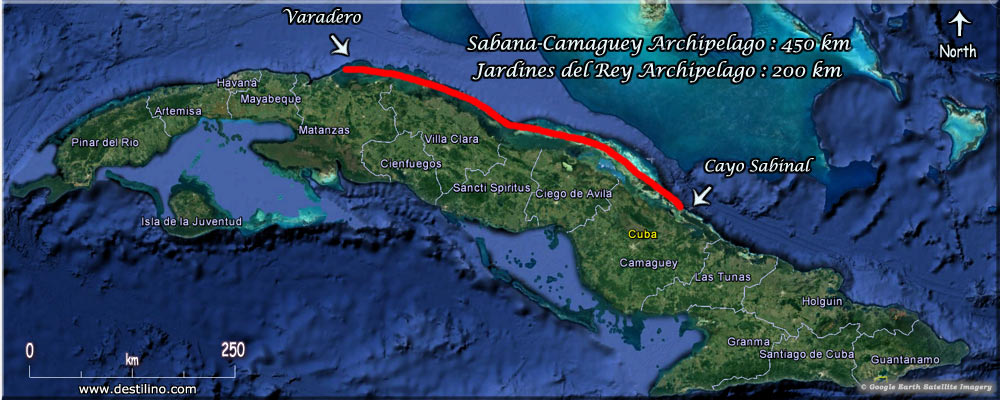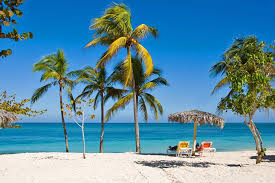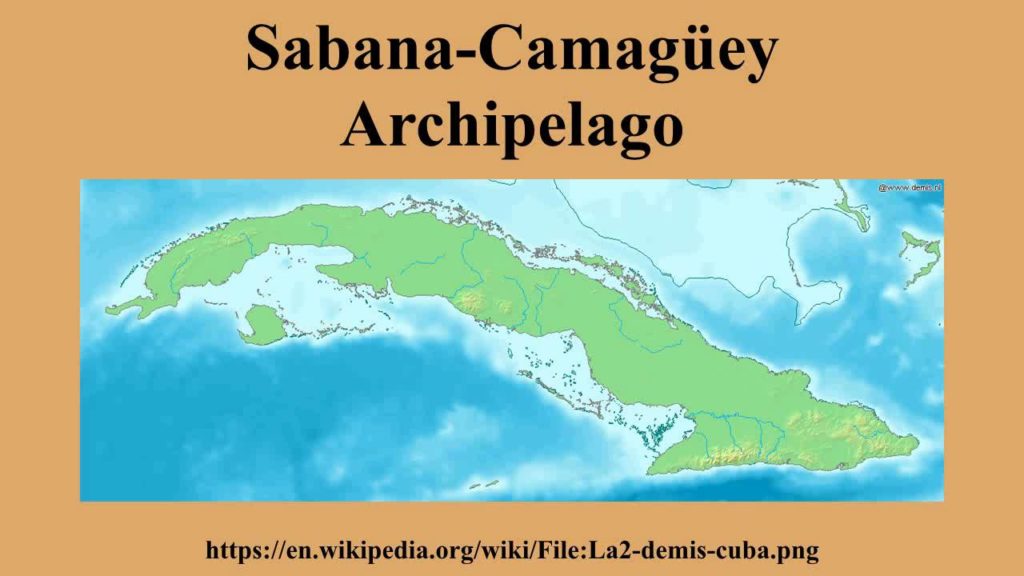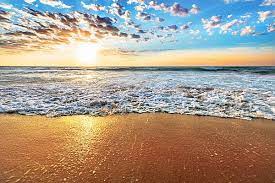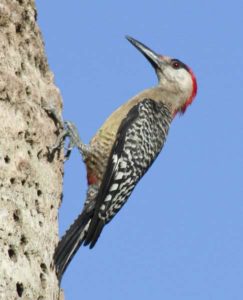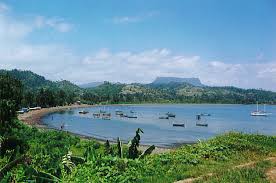EL ARCHIPIELAGO DE SABANA-CAMAGUEY, CONSIDERADO EL GRUPO DE ISLOTES MÁS GRANDE DE LA ISLA. PHOTOS
Sabana-Camagüey es un archipiélago que se encuentra en la costa atlántica centro-norte de Cuba. Se ubica frente a la costa norte de las provincias de Matanzas, Villa Clara, Sancti Spíritus, Ciego de Ávila y Camagüey, y limita al norte con el Océano Atlántico, específicamente con el Canal Nicolás (segmento Sabana) y el Canal Viejo Bahama. (Tramo Camagüey).
El archipiélago está ubicado en un eje general noroeste al sureste y se extiende por 475 km (295 millas) desde la Península de Hicacos y Varadero hasta la Bahía de Nuevitas. Todo el sistema cubre más de 75.000 km2 (29.000 millas cuadradas) y está compuesto por aproximadamente 2.517 cayos e islas. Las islas orientales se agrupan en el archipiélago Jardines del Rey y contienen Cayo Coco, Cayo Guillermo y Cayo Romano entre otros.
El archipiélago de Sabana -Camagüey, es considerado el grupo más grande de islotes que rodean la isla de Cuba.
La hilera de cayos dotados de bellezas naturales y paralelos al litoral fue bautizada por Diego Velázquez a principios del siglo XVI como los Jardines del Rey, en homenaje al entonces monarca de España, Fernando El Católico.
Cubiertos de bosques, con predominio de arbolitos y manglares, y más de 40 kilómetros de playas, muchas aún vírgenes, los cayos Coco, Guillermo, Paredón Grande, Antón Chico y Media Luna forman parte de la Reserva de la Biosfera Buenavista.
CONSERVACIÓN
El ecosistema marino y costero representado por el archipiélago se encuentra en proyectos de conservación apoyados por el Fondo para el Medio Ambiente Mundial y Environment Canada. Los manglares y los bosques costeros crean efectivamente una zona de amortiguamiento entre la costa agrícola y el sensible ambiente marino. El ecosistema Sabana-Camagüey comprende la Reserva de la Biosfera Bahía de Buena Vista, el Parque Nacional Caguanes y los humedales del norte de la provincia de Ciego de Ávila. Aquí se encuentran un total de 35 sitios protegidos.
LISTA DE CAYOS
Sección Sabana
Cayo Piedras. Cayo Cruz del Padre, Cayo Blanco, Cayo Cinco Leguas, Cayo Inglés, Cayo Falcones, Cayo Megano, Cayo Blanquizal, Cayo Sotaviento, Cayo Verde, Cayo Hicacal, Cayo La Vela, Cayos de Pajonal, Cayo Fragoso.
Tramo Camagüey
Cayo Francés, Cayo Santa María, Cayo Caiman Grande, Jardines del Rey, Cayo Guillermo, Cayo Coco, Cayo Judas, Cayo Romano, Cayo Paredon, Grande, Cayo Megano Grande, Cayo Eusebio, Cayo Cruz, Cayo Guajaba, Cayo Sabinal.
Estos islotes bañados por el mar Atlántico sirven de hábitat a más de 200 especies de aves, de 14 géneros, entre migratorias, terrestres y endémicas, lo que representa un gran potencial para el turismo de naturaleza en la zona.
Los cayos son refugios permanentes o temporales de aves, tanto de especies propias del territorio cubano como de otras que vienen de tierras lejanas en busca de un clima más benigno. Hasta el momento se han reportado unas 234 variedades de plumas, más del 63 por ciento de las registradas en la Isla, de las cuales un número significativo es migratorio, debido a la existencia en la zona de un importante corredor internacional.
FAUNA ENDÉMICA COEXISTE EN LA ZONA
En estos lugares conviven algunas joyas endémicas de la Isla, como el cabrito del pantano, la cartacuba, el ruiseñor, el carpintero verde, el peto, el ruiseñor negro y el halcón batista, entre otros. Pertenecientes al Gran Humedal del Norte de Ciego de Ávila, existen poblaciones de coco blanco o ibis blanco, ave larguirucha que dio nombre al islote; la corúa, el periquito, el negrito, el chichinguaco, el zunzún y muchos más. Los pájaros carpinteros jabao, verde y escapular tienen sólo 16 ejemplares de palma real (árbol nacional de Cuba) en todos los cayos para construir sus nidos, huecos que también sirven como guaridas para otros 12 tipos de plumas, entre ellas el Siju y la ciguapa.
Actualmente, los estudios se centran en el vireo de las Bahamas, la cabra de pantano y el ruiseñor negro, ya que son variedades que están altamente expuestas a desaparecer si no se conserva su hábitat natural.
Los cayos norte de la provincia de Ciego de Ávila, 430 kilómetros al este de La Habana, se incluyen cada año en el Festival de Aves Endémicas del Caribe, que siempre se realiza en mayo, con motivo del Día de la Biodiversidad. El evento promueve el conocimiento de las aves nativas de la zona para crear conciencia social sobre la necesidad de protegerlas, teniendo en cuenta que más del 26 por ciento de las que habitan el Caribe son endémicas.
THE SABANA-CAMAGUEY ARCHIPELAGO, CONSIDERED THE LARGEST GROUP OF ISLETS ON THE ISLAND. PHOTOS
Sabana-Camagüey is an archipelago that lies on Cuba’s north-central Atlantic coast. It is located off the northern coast of the provinces of Matanzas, Villa Clara, Sancti Spíritus, Ciego de Ávila, and Camagüey, and is bounded to the north by the Atlantic Ocean, specifically by the Nicholas Channel (Sabana segment) and Old Bahama Channel (Camagüey segment).
The archipelago is positioned on a general north-west to the south-east axis and stretches for 475 km (295 mi) from the Hicacos Peninsula and Varadero to the Bay of Nuevitas. The entire system covers more than 75,000 km2 (29,000 sq mi) and is composed of approximately 2,517 cays and isles. The eastern islands are grouped in the Jardines del Rey archipelago and contain Cayo Coco, Cayo Guillermo, and Cayo Romano among others.
The Sabana -Camagüey archipelago, is considered the largest group of islets that surround the island of Cuba.
The row of keys endowed with natural beauties and parallel to the coastline was named by Diego Velázquez at the beginning of the 16th century as the Gardens of the King, in homage to the then monarch of Spain, Fernando El Catolico.
Covered with forests, with a predominance of small trees and mangroves, and more than 40 kilometers of beaches, many still virgin, the Coco, Guillermo, Paredón Grande, Antón Chico, and Media Luna keys are part of the Buenavista Biosphere Reserve.
CONSERVATION
The coastal and marine ecosystem represented by the archipelago is undergoing conservation projects supported by the Global Environment Facility and Environment Canada. Mangroves and coastal forests effectively create a buffer zone between the agricultural coast and the sensitive marine environment. The Sabana-Camagüey ecosystem encompasses the Bay of Buena Vista Biosphere Reserve, the Caguanes National Park, as well as wetlands of northern Ciego de Ávila Province. A total of 35 protected sites are located here.
LIST OF CAYS
Sabana section
Cayo Piedras. Cayo Cruz del Padre, Cayo Blanco, Cayo Cinco Leguas, Cayo Ingles, Cayo Falcones, Cayo Megano, Cayo Blanquizal, Cayo Sotaviento, Cayo Verde, Cayo Hicacal, Cayo La Vela, Cayos de Pajonal, Cayo Fragoso.
Camagüey section
Cayo Frances, Cayo Santa Maria, Cayo Caiman Grande, Jardines del Rey, Cayo Guillermo, Cayo Coco, Cayo Judas, Cayo Romano, Cayo Paredon, Grande, Cayo Megano Grande, Cayo Eusebio, Cayo Cruz, Cayo Guajaba, Cayo Sabinal.
These islets bathed by the Atlantic Sea serve as habitat for more than 200 species of birds, of 14 genera, between migratory, terrestrial, and endemic, which represents great potential for nature tourism in the area.
The keys are permanent or temporary refuges for birds, both for species typical of Cuban territory and for others that come from distant lands in search of a more benign climate. So far, some 234 varieties of feathers have been reported, more than 63 percent of those registered on the Island, of which a significant number is migratory, due to the existence in the area of an important international corridor.
ENDEMIC FAUNA COEXIST IN THE AREA
Some endemic jewels of the Island coexist around these places, such as the little goat from the swamp, the cartacuba, the mockingbird, the green carpenter, the breastplate, the black mockingbird and the batista hawk, among others. Belonging to the Great North Wetland of Ciego de Ávila, there are populations of white coconut or white ibis, a lanky bird that gave the islet its name; the corúa, the parakeet, the negrito, the chichinguaco, the zunzún and many more. The jabao, verde and scapular woodpeckers have only 16 specimens of royal palm (Cuba’s national tree) in the entire keys to build their nests, holes that also serve as dens for 12 other types of feathers, including the Siju and the ciguapa.
Currently, the studies are focused on the Bahamas vireo, the swamp goat, and the black mockingbird, as they are varieties that are highly exposed to disappear if their natural habitat is not preserved.
The northern keys of the province of Ciego de Ávila, 430 kilometers east of Havana, are included each year in the Festival of Endemic Birds of the Caribbean, which always takes place in May, on the occasion of Biodiversity Day. The event promotes knowledge of the native birds of the area to create social awareness about the need to protect them, taking into account that more than 26 percent of those that inhabit the Caribbean are endemic.
Agencies/ Wiki/ CubanEndemicFauna/ Extractos/ Excerpt/ Internet Photos/ Arnoldo Varona/ www.TheCubanHistory.com
THE CUBAN HISTORY, HOLLYWOOD.



 EL ARCHIPIELAGO Sabana-Camaguey, considerado el Grupo de Islotes más Grandes de la Isla. * THE SABANA-CAMAGUEY Archipelago is considered the largest Group of Islets on the Island. PHOTOS
EL ARCHIPIELAGO Sabana-Camaguey, considerado el Grupo de Islotes más Grandes de la Isla. * THE SABANA-CAMAGUEY Archipelago is considered the largest Group of Islets on the Island. PHOTOS